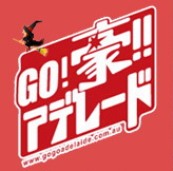To understand the significance of koinobori, it’s important to know a few things about Kodomo no Hi (Children’s Day).
Kodomo no Hi
May 5 is a national holiday in Japan known as ‘Kodomo no Hi’ (子供の日) or ‘Children's Day’. It’s a day to celebrate the health and happiness of children. Throughout Children's Day, children also thank and show respect for parents, relatives, and teachers for support throughout their life.
Koinobori
'Koinobori' means 'carp-streamer kite', and the carp was chosen as the symbol of Children's Day because the Japanese consider it the most spirited fish, full of energy and power to fight its way up rapidly-flowing streams. Because of its strength and determination to overcome all obstacles, the carp symbolises courage and the ability to attain high goals. Since these are traits desired in boys, families traditionally flew ‘koinobori’ from their homes to honor their sons, though this tradition has developed to include daughters as well.
On Kodomo no Hi, families fly ‘koinobori’ to express the hope that their children will grow up healthy and strong. There are also smaller versions of koinobori for families living in apartments.
There is a Japanese proverb ‘koi no takinobori (鯉の滝登り, carp climbing the waterfall)’, which means to achieve success in life.




